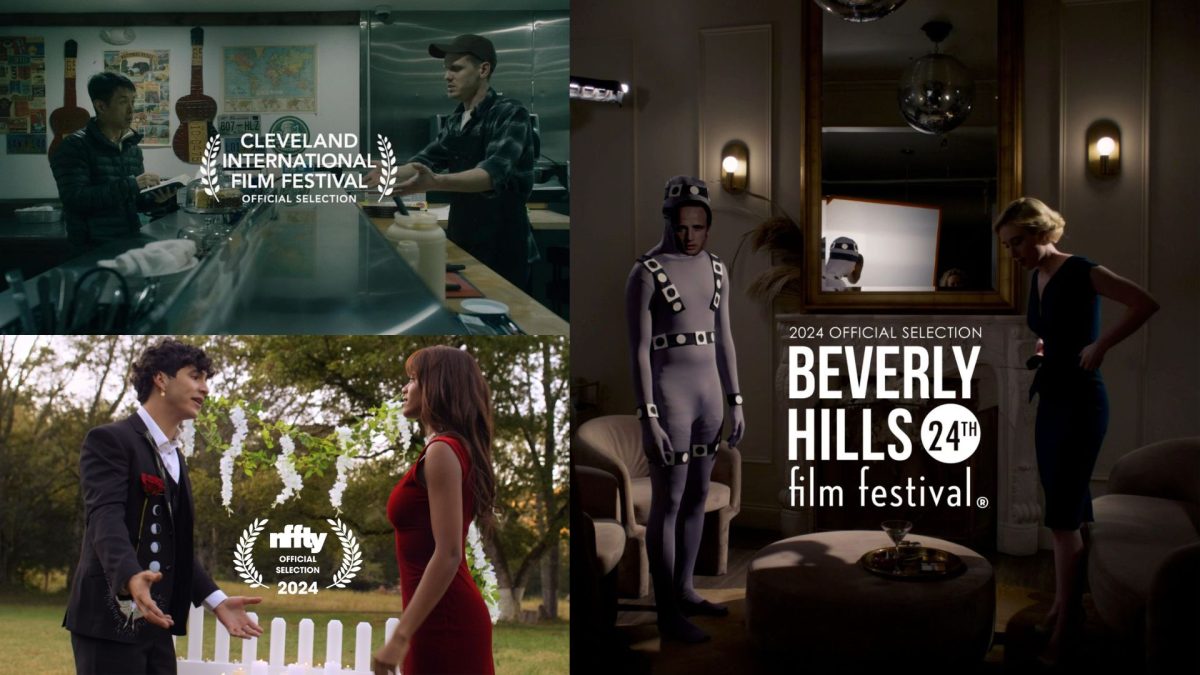When quarantine isolation hit, 2020 became the year of Netflix and chill. Stay-at-home mandates transformed binge-watching from a guilty pleasure into one of the only ways to stay sane. How else can we explain the popularity of “Tiger King?” But new competitors on the oversaturated streaming market means it’ll take a New Year’s miracle to reassert Netflix’s dominance. And that’s exactly what they’ve delivered: in 2021, Netflix plans to release one new movie. Every. Single. Week. There’s comedy, there’s romance, there’s historical fiction thriller—you name it, Netflix’s 2021 lineup has got it.
So, come join Leo DiCaprio, Gal Gadot and The Vanderbilt Hustler for “New Year, New Netflix,” our new column from the Life staff where one lucky writer will take you through a new Netflix movie every week. We’ve got a lot to watch, and so do you.
The directing camera pans over expansive fields in “The Dig,” which are obscured by the humongous presence of three…dirt mounds?
In this emotional roller coaster of a film, priceless historical artifacts are discovered in an heiress’ backyard, while the inevitable commencement of World War II looms. Unlike many popular films on Netflix, “The Dig” follows several storylines at once and addresses love, sexuality and morality in the shadow of the approaching war, with each separate storyline tied together by the shocking discovery of an Anglo-Saxon burial ground in the backyard of Edith Pretty’s (Carey Mulligan) estate. The constant museum fights over these precious finds intertwines with the emotional relations of the characters and the fear of the war, attempting to bring this true story to life.
At the Pretty estate, we first meet Basil Brown (Ralph Fienne), an English self-taught archaeologist and astronomer who in 1939 discovered the Anglo-Saxon ship and interior burial at Sutton Hoo. Curators from the Ipswich Museum and British Museum repeatedly try to push him off the Pretty project to gain control and take credit for the dig. However, Mrs. Pretty is terminally ill and feels a strong (possibly romantic) connection to Mr. Brown, insisting on his continued involvement in the dig.
Peggy Preston (Lily James), the wife of a museum curator, is also brought on the project, merely because of her petite size that allows her to walk on the fragile digsite, but she thinks it’s because of her important work. Interestingly, Peggy discovers the Merovingian coin, thus leading to the confirmation of a burial ground in the ship—a bigger discovery than many of the other archaeologists on the project.
Of course, this means “The Dig” makes a statement about 1940s feminism and rewritten histories. Because both Mr. Brown and Peggy were undermined and ignored in the true history of the event, the production of the film retrospectively attempts to give credit where credit is due. These two characters, one from low socioeconomic status and one a woman, contributed greatly to one of the most significant archaeological finds ever, and the imminent threat of the war meant their contributions were lost to history. Instead, the curators saved the artifacts in underground bunkers to keep them safe and later released them in museums without mention of Mr. Brown or Peggy.
Lily James and Carey Mulligan, who recently broke out in her film “Promising Young Woman,” fill these historical roles wonderfully. Each actress takes the film by storm with their facial expressions and beauty in simplicity. Peggy faces multiple obstacles being a woman on this project, and James’ ever-present pursed lips and shocked expressions reveal her silent disgust with the male characters. Mulligan also wears little to no makeup and furrows her eyebrows when in pain or confusion, giving her character necessary depth. James’ and Mulligan’s expressive acting clearly emphasize their heated emotions, and the lack of extravagant costumes and makeup accentuates the beauty to be found in plainness.
Though it was ranked top three in the U.S. on Netflix when I was panning through available flicks, the many overlapping character-based plots became too complex for the rich history of the story to make complete sense. Characters fade in and out of the foreground too quickly, making weird returns to the screen at unexpected times, and the film jumps from point to point in the main story of the dig with very little regard for all that happens in between each event. This creates a disconnected and disjointed feeling, as if the story would have been better told through a series of several episodes—each focused on a specific character—instead of a single, longer film.
Despite this, director Simon Stone manages to illustrate satisfying conclusions for each character’s relationship, identity realization or discovery of inner peace, but the war still looms over each respective happy ending. The dark setting and cinematic perspective of the film augment these depressing undertones with bleak colors and dirty faces as the characters dig in the dirt.
With emotional twists and turns, historical basis and perceptive comments on 1940s society, this pensive and introspective film will certainly keep audiences engaged, even though they might have to “dig” for the story just a bit.







